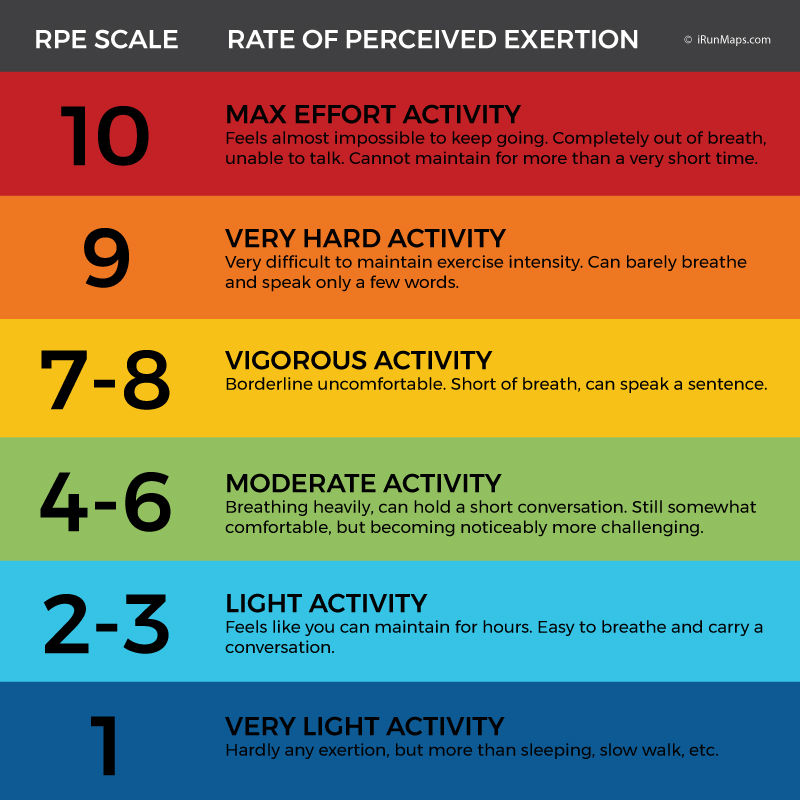The health benefits of strength training are numerous: strength training can reduce the risk of many conditions (i.e. cardiovascular disease, diabetes, osteoporosis, depression), promote fat loss, and, of course, improve strength and fitness levels. While there are clear benefits to beginning a strength training program, getting started can be a daunting task.
To build strength, according to the American College of Sports Medicine, we should lift 60-80% of our 1 rep maximum (the most amount of weight that can be lifted once) for 8-12 repetitions per set. But what is our 1 rep max? Many individuals don’t know. An alternate way to appropriately lift the correct weight is to rely on rating of perceived exertion (RPE), which has been shown to correlate well to 1 rep max. An easy way to rate RPE is through a 0-10 scale, with an RPE of 0 equivalent to rest (no effort) and an RPE of 10 equivalent to maximal effort.
With an understanding of RPE, beginners should strive for a set of 8-12 repetitions with good technique and aim for an RPE of 5-7 out of 10. Repeat for 1-3 sets. Remember, it is better to underestimate how much weight can be lifted than to overestimate, which can lead to injuries. If you find that the set was not as difficult as you thought it would be, you can always adjust next time with additional resistance.
How often should I be resistance training?
According to the National Strength and Conditioning Association (NSCA), a general guideline is to allow for 1-3 days of rest in between exercise of the same muscle groups. The NSCA recommends 2-3 weightlifting sessions per week for those at the novice or beginner level and 3 lifting sessions per week for those at the intermediate level. An intermediate level lifter can strength train up to 4 times per week if muscle groups are split into separate days (i.e. lower body on M/Th, upper body Tu/F).
I’m getting stronger. How do I progress my exercise?
Here are a few simple ways to make your routine a little harder: increase reps/sets, increase resistance, and/or decrease rest time. You can also start mixing some new exercises into your routine.
If you have any questions, please don’t hesitate to ask! Give us a call 619.260.0750.
References:
- Westcott W. ACSM strength training guidelines: role in body composition and health enhancement. ACSM’s Health & Fitness Journal. 2009; 13 (4): 14-22.
- Westcott W, Winett R. Applying the ACSM guidelines. 2005. https://www.athleticbusiness.com/health-fitness/applying-the-acsm-guidelines.html.
- Morishita S, Tsubaki A, Takabayashi T, Fu J. Relationship between the rating of perceived exertion scale and the load intensity of resistance training. Strength Cond J. 2018; 40 (2): 94-109.

